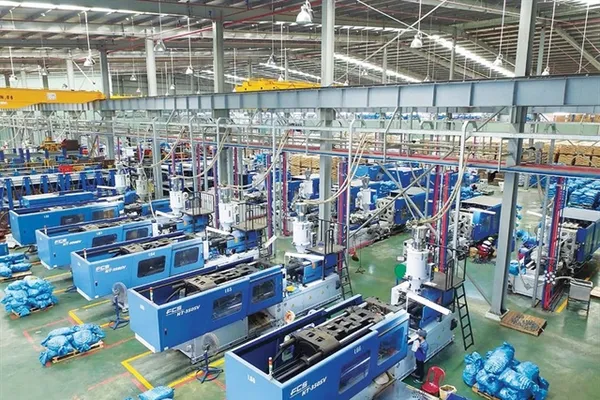 Economy
Economy

 |
| Cutting-edge technologies and innovations in the plastics industry on display at VietnamPlas expo in HCM City in October. — VNA/ VNS Photo |
HCM CITY — The plastics industry has enjoyed impressive growth this year, driven by steady demand from the construction, packaging and consumer industries, according to the Việt Nam Plastics Association.
Its output is forecast to reach 11.65 million tonnes this year and 16.36 million tonnes by 2029, an annual growth rate of 8.44 per cent.
Its sales this year will be worth an estimated US$31.1 billion, an increase of 23.9 per cent from last year.
Exports will grow by 26.7 per cent to $6.57 billion.
Shipments to the US, the country’s largest market, and other major ones such as Japan, China, the Republic of Korea, Europe, Thailand, and India have grown strongly.
Vietnamese plastic products are sold to more than 170 markets globally.
The country’s more than 4,000 plastic producers include 90 per cent small and medium-sized enterprises that employ more than 250,000 workers.
Rapid urbanisation in many countries, including Việt Nam, has led to a steady growth in the demand for construction plastics, Đinh Đức Thắng, president of the association, said.
The rising number of people joining the middle class globally and the boom in e-commerce have driven demand for household appliances and packaging, he told a meeting of member enterprises in HCM City last week.
Besides, Việt Nam has become one of the world’s major manufacturing hubs, with many factories being newly built or moving from other countries, which also drives the plastics market, he said.
“Over the past decade, the plastics industry has maintained stable growth and become one of the key industries, contributing significantly to the country’s economic growth.
“But [it] is also facing a number of challenges, particularly pollution that has become a global problem.”
Demand for carbon reduction, recycling and the reduction of single-use plastics require businesses to adopt technological innovation, increasing production costs.
Dependence on imported raw materials is also a major concern, making businesses vulnerable to fluctuations in international markets.
The transition to a circular economy and sustainable production standards is a great opportunity for the Vietnamese plastics industry, especially in the production of environmentally friendly and recycled products, to meet the requirements of markets such as the EU, US and Japan.
Free trade agreements such as the EU-Việt Nam Free Trade Agreement (EVFTA), the Comprehensive and Progressive Agreement for Trans-Pacific Partnership (CPTPP) and Regional Comprehensive Economic Partnership (RCEP) not only expand export opportunities but also create conditions to improve production standards and develop high value-added products.
EPR (Extended Producer Responsibility) regulations and policies prioritising investment in recycling and technological innovation have created favourable conditions for the industry to turn green, he added.
Cấn Văn Lực, chief economist at State-owned lender BIDV and a member of the National Financial and Monetary Policy Advisory Council, said per capita plastic consumption in Việt Nam is still much lower than in other countries, and so the industry has plenty of room to grow.
He said the packaging industry is growing and demand for plastic in many other fields is also increasing, especially in construction and infrastructure development.
The demand from the food, medical and electronics industries is huge and increasing, he added. — VNS